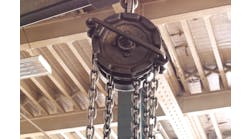ARC's Larry O'Brien predicts big changes at Honeywell in his review of the recent Honeywell User Group meeting in Phoenix in June. Both Honeywell Process Solutions' newly appointed president Norm Gilsdorf and HPS Americas vice president and general manager Frank Whitsura, come from HPS' sister company UOP and that, O'Brien implies, gives them a far deeper understanding of the process automation business and its customers than Gilsdorf's predecessor, Jack Bolick, whose background was in the semiconductor business. It also, he suggests, gives greater credibility to the underlying strategy of enabling HPS to draw on the capabilities of the entire Honeywell organization. That was already being encouraged under Bolick, but it now has formal recognition as OneHoneywell, an initiative aimed at combining HPS' technological strengths and Main Automation Contractor (MAC) experience with UOP's process technology and the other members of the groups' capabilities in areas such as security and combustion control.
Energy Management
This approach is epitomized in Honeywell's new portfolio of energy management solutions which specifically target the energy intensive process industries and, in the case of refining and petrochemicals, leverage particular UOP expertise. Arguably the most eye-catching feature of the initiative is the new Energy Dashboard, due for release in the final quarter of this year and designed to combine information from a wide range of sources in order to monitor overall energy consumption against specific targets. According to O'Brien, Honeywell claims to be able to reduce energy consumption in refineries and petrochem plants by as much as 25% and cut associated green house gas emissions by up to 320,000 tonnes per year. Equivalent figures claimed for other process industries such as pulp & paper are a 20% reduction in energy consumption and a 44,000 tonne-per-year cut in green house gases.
Gilsdorf's strategy for achieving what is dubbed the "Automation 2020" vision focuses on a number of key areas including:
- Ubiquitous sensors – deploying ever more sensors to collect data from across the plant and the enterprise;
- Wireless as an enabler – cost-effectively to bring in data from the field and push out information to mobile workers;
- Convert data to knowledge – using applications which address the needs of specific individuals;
- Converge IT and process control – linking data across the global enterprise and managing it with proven IT technologies;
- Unify automation layers – embedding key functions into automation layers to provide the right information to the right person and thus enable business agility and efficiency;
- Go beyond the plant boundaries – to manage data at an enterprise level for enterprise-wide optimization.
Examples of where this is already leading include wearable sensors for fire and gas detection and embedded early event detection.
An interesting and important issue raised by O'Brien in a recent posting to his blog (you can find it at www.arcweb.com) is the question of predicting the failure of legacy hardware. As he points out, many users have upgraded workstations and applications while leaving controllers and I/O, often 20 or 30 years old, in place. That's fine on the "If it ain't broke, don't fix it" principle, but the problem is that nobody, manufacturer or user, knows how long they can be expected to last.
What is likely, however, is that, once they do start to fail, they're all likely to go pretty much at once, rendering planning for scheduled hot cutover impractical. What's needed, he says, are hardware failure models which take into account factors such as ambient and environmental conditions. Most users don't even keep detailed records of past failures and, even when they do, seldom record which actual components failed or why. As a result they're in no position to argue with management for the replacement of hardware which has worked reliably for decades and still shows no sign dying―yet.



